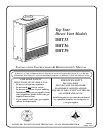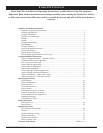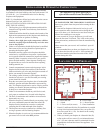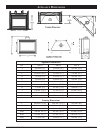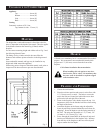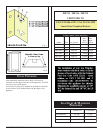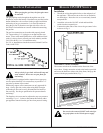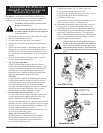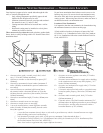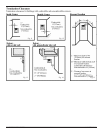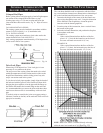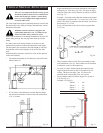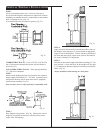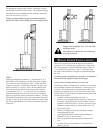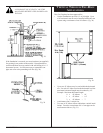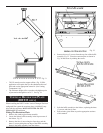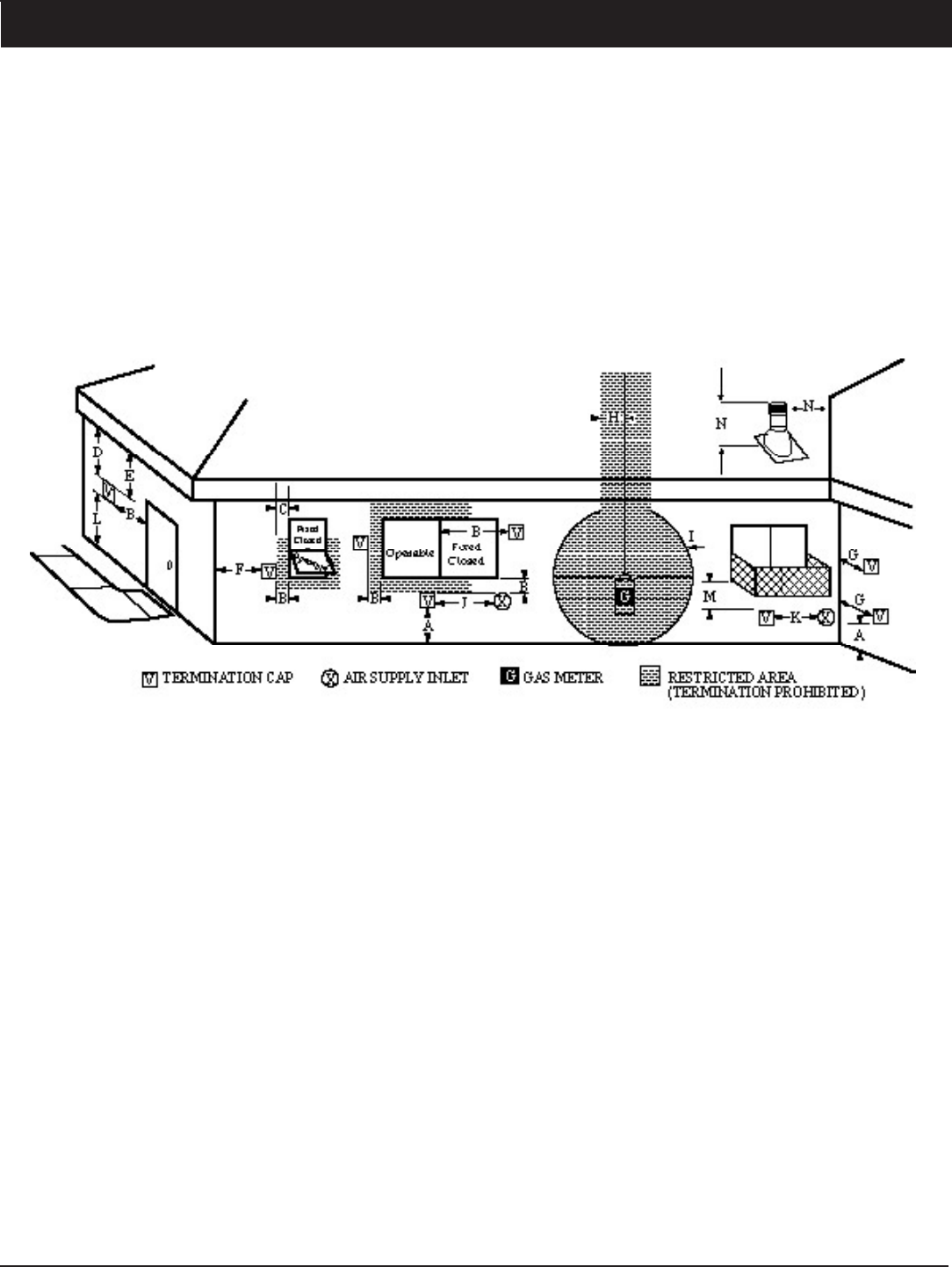
10002789/0 -9- DBT33/DBT36/DBT39
A = clearance above grade, veranda, porch, deck, or bal-
cony [* 12 inches (305mm) minimum]
B = clearance to window or door that may be opened [12"
(306mm)].
C = clearance to permanently closed window [minimum 12
inches (305mm) recommended to prevent condensation
on window]
D = vertical clearance to ventilated soft located above
the terminal within a horizontal distance of 24 inches
(610mm) from the centre-line of the terminal [18 inches
(458mm) minimum]
E = clearance to unventilated soft [12 inches (305mm) min-
imum].
F = clearance to outside corner see next page
G = clearance to inside corner see next page
H = * not to be installed above a meter/regulator assembly
within 36 inches (914mm) horizontally from the centre-
line of the regulator
† a vent shall not terminate directly above a side-walk or paved driveway which is located between two single
family dwellings and serves both dwellings *
‡ only permitted if veranda, porch, deck, is fully open on a minimum 2 sides beneath the oor *
* as specied in CAN/CGA B149 (.1 or .2) Installation Codes (1991) for Canada or for U.S.A. Installations follow
the current National Fuel Gas Code, ANSI Z223.1.
Note: Local codes or regulations may require different clearances.
I = clearance to service regulator vent outlet [*72 inches
(1828mm) minimum]
J = clearance to non-mechanical air supply inlet to building
or the combustion air inlet to any other replace [ *12
inches (305mm) minimum]
K = clearance to a mechanical air supply inlet [* 72 inches
(1828mm) minimum]
L = † clearance above paved side-walk or a paved driveway
located on public property [*84 inches (2133mm) mini-
mum]
M = clearance under veranda, porch, deck [*12 inches
(305mm) minimum ‡]
N = Clearance above a roof shall extend a minimum of 24"
(610mm) above the highest point when it passes through
the roof surface, and any other obstruction within a
horizontal distance of 18" (450mm).
Do not locate termination hood where excessive snow or ice
build up may occur. Be sure to check vent termination area
after snow falls, and clear to prevent accidental blockage of
venting system. When using snow blowers, make sure snow is
not directed towards vent termination area.
Location of Vent Termination
It is imperative that the vent termination be located observing
the minimum clearances as shown on this page.
*Check with local codes or in absence of same with CAN/
CGA B149 (.1 or .2) Installation Codes (1991) for Canada or
for U.S.A. Installations follow the current National Fuel Gas
Code, ANSI Z223.1.
Your replace is approved to be vented either through the side
wall, or vertically through the roof.
– Only venting components specically approved and
labelled for this replace may be used.
– Minimum clearances between vent pipes and combusti-
ble materials is one (1") inch (25 mm).
– Venting terminals shall not be recessed into a wall or
siding.
– Horizontal venting must be installed on a level plane
without any incline or decline.
There must not be any obstruction such as bushes, garden sheds,
fences, decks or utility buildings within 24" from the front of the
termination hood.
GENERAL VENTING INFORMATION — TERMINATION LOCATION



